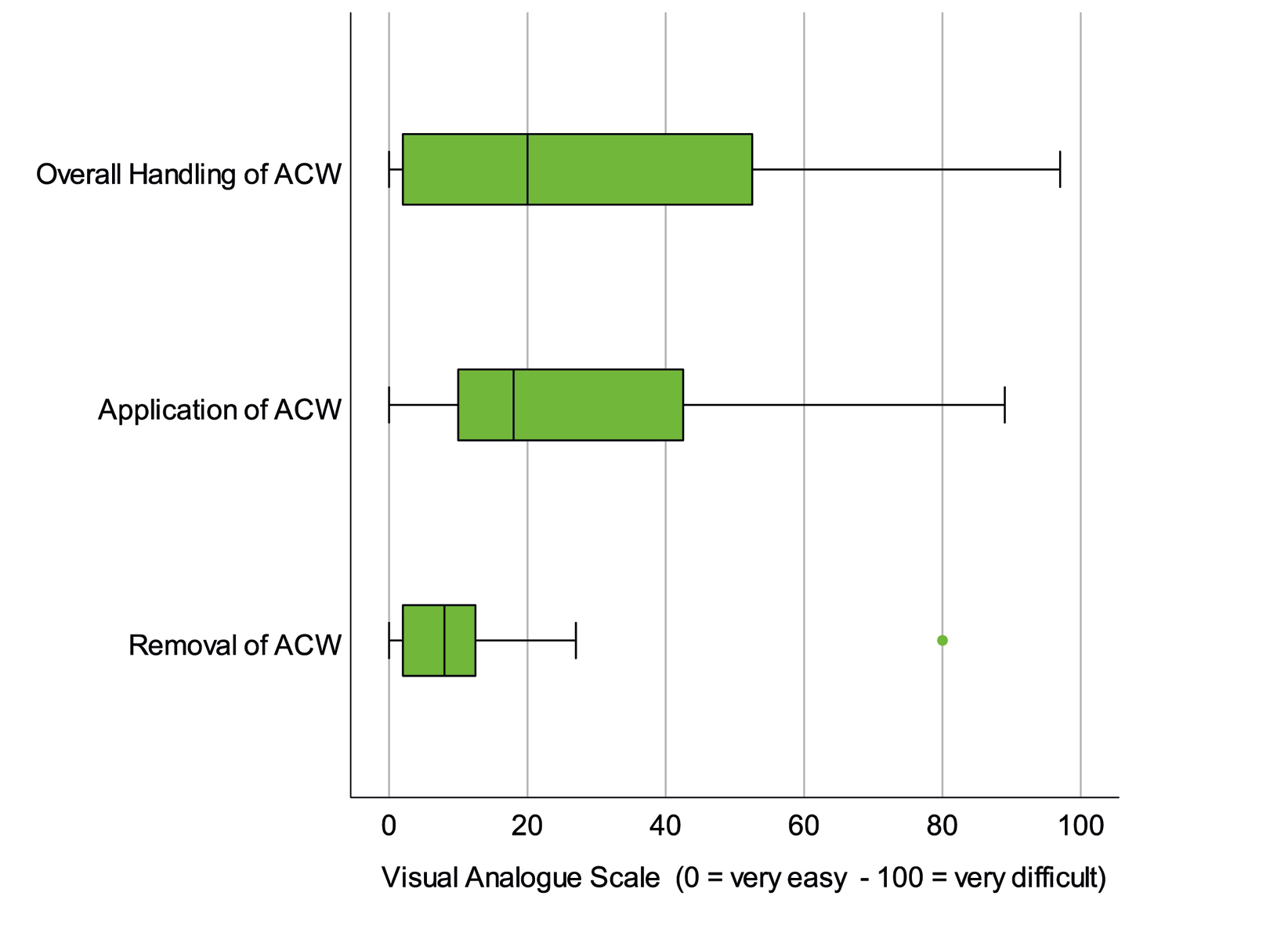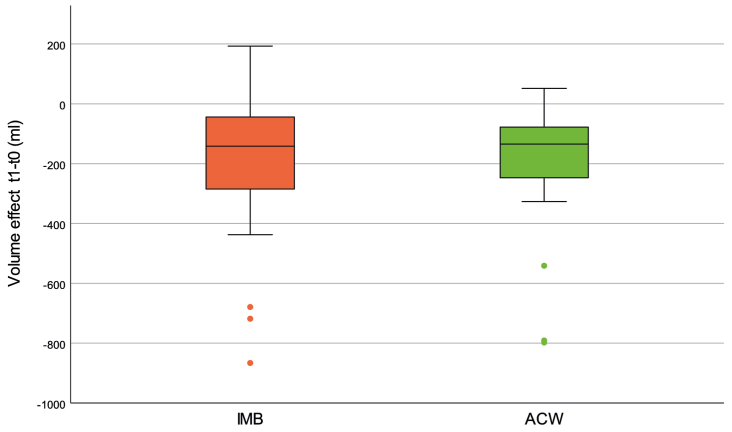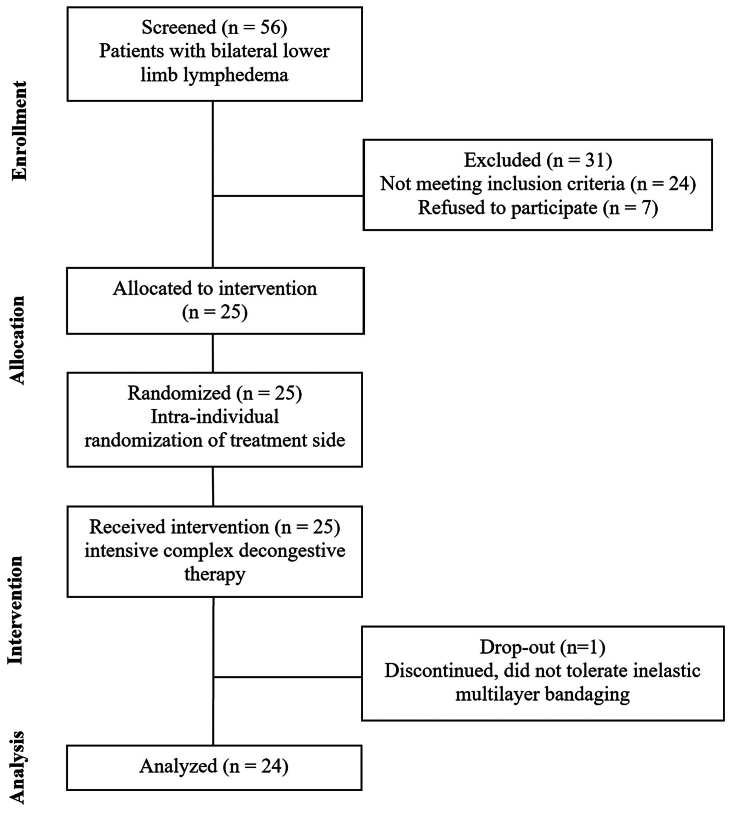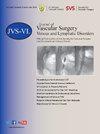A randomized, controlled noninferiority study of adjustable compression wraps compared with inelastic multilayer bandaging used in the intensive complex decongestive therapy of lower leg lymphedema
IF 2.8
2区 医学
Q2 PERIPHERAL VASCULAR DISEASE
Journal of vascular surgery. Venous and lymphatic disorders
Pub Date : 2025-02-25
DOI:10.1016/j.jvsv.2025.102214
引用次数: 0
Abstract
Objective
We evaluated the noninferiority of adjustable compression wraps compared with inelastic multilayer bandaging in reducing lower leg volume during intensive complex decongestive therapy in patients with bilateral, symmetrical lymphedema. Secondary outcomes included application time, patient comfort, and side effects.
Methods
A prospective, randomized controlled noninferiority trial was conducted on 24 patients with stage II to III bilateral leg lymphedema during a 10-day intensive complex decongestive therapy. Each patient received adjustable compression wraps on a randomized side, while the contralateral leg was treated with inelastic multilayer bandages. The primary outcome was the difference in volume reduction, measured by perometer for lower leg volume, with a predefined noninferiority margin of 50 mL. Application time was measured. Subjective parameters were assessed with visual analogue scales (range, 0-100).
Results
Adjustable compression wraps were noninferior to inelastic multilayer bandages with a mean difference in volume reduction of 9.45 mL (95% confidence interval −30.40 to 49.26), with respect to the a priori defined noninferiority margin of 50 mL. In a subsequent test of superiority, intraindividual differences did not differ significantly (P = .629). Adjustable compression wraps took significantly less time to apply (8.4 minutes; P < .001), and patients rated them as more comfortable (median visual analogue scale difference, 30; P < .001). Both compression methods reduced skin tightness significantly, with no notable differences between treatments. Adjustable compression wraps showed fewer side effects, and 83.3% of participants indicated they would continue using them. No adverse events were attributed to the compression wraps.
Conclusions
Adjustable compression wraps proved to be an effective, noninferior alternative to inelastic multilayer bandages for reducing lower leg volume in the intensive complex decongestion therapy, although superiority could not be demonstrated. Their advantages include shorter application time and improved patient comfort. The potential for self-management makes them a promising option for lymphedema therapy, provided patients receive adequate training.



一项随机对照非劣效性研究:可调节压缩包与非弹性多层绷带在下肢淋巴水肿强化综合消血治疗中的比较。
目的:评价可调节压缩包与非弹性多层绷带在双侧对称性淋巴水肿患者强化复杂消血治疗中减少下肢体积的非低效性。次要结果包括应用时间、患者舒适度和副作用。方法:对24例II-III期双侧腿部淋巴水肿患者进行为期10天的强化综合消血治疗,进行前瞻性、随机对照非劣效性试验。每位患者在随机一侧接受可调节的压缩包,而对侧腿使用无弹性多层绷带治疗。主要结果是体积减少的差异,通过下肢容积计测量,预先定义的非劣效范围为50 ml。测量应用时间。主观参数用视觉模拟量表(VAS,范围0-100)评定。结果:可调式压缩包不劣于非弹性多层绷带,相对于先验定义的50 ml的非劣效裕度,其体积减少的平均差异为9.45 ml[-30.40, 49.26]。在随后的优势检验中,个体间差异无显著差异(p=0.629)。可调节压缩包装的应用时间明显缩短(8.4分钟;p < 0.001),患者认为它们更舒适(vas中位差30;P < 0.001)。两种方法均能显著降低皮肤紧绷度,两种方法间无显著差异。可调式压缩包装的副作用更少,83.3%的参与者表示他们会继续使用。没有不良事件归因于压缩包。结论:可调节压缩包被证明是一种有效的、非弹性多层绷带的替代品,用于减少下肢体积,在强化的复杂的去充血治疗中,但没有优势。其优点包括缩短应用时间和提高患者舒适度。如果患者接受足够的训练,其自我管理的潜力使其成为淋巴水肿治疗的一个有希望的选择。
本文章由计算机程序翻译,如有差异,请以英文原文为准。
求助全文
约1分钟内获得全文
求助全文
来源期刊

Journal of vascular surgery. Venous and lymphatic disorders
SURGERYPERIPHERAL VASCULAR DISEASE&n-PERIPHERAL VASCULAR DISEASE
CiteScore
6.30
自引率
18.80%
发文量
328
审稿时长
71 days
期刊介绍:
Journal of Vascular Surgery: Venous and Lymphatic Disorders is one of a series of specialist journals launched by the Journal of Vascular Surgery. It aims to be the premier international Journal of medical, endovascular and surgical management of venous and lymphatic disorders. It publishes high quality clinical, research, case reports, techniques, and practice manuscripts related to all aspects of venous and lymphatic disorders, including malformations and wound care, with an emphasis on the practicing clinician. The journal seeks to provide novel and timely information to vascular surgeons, interventionalists, phlebologists, wound care specialists, and allied health professionals who treat patients presenting with vascular and lymphatic disorders. As the official publication of The Society for Vascular Surgery and the American Venous Forum, the Journal will publish, after peer review, selected papers presented at the annual meeting of these organizations and affiliated vascular societies, as well as original articles from members and non-members.
 求助内容:
求助内容: 应助结果提醒方式:
应助结果提醒方式:


